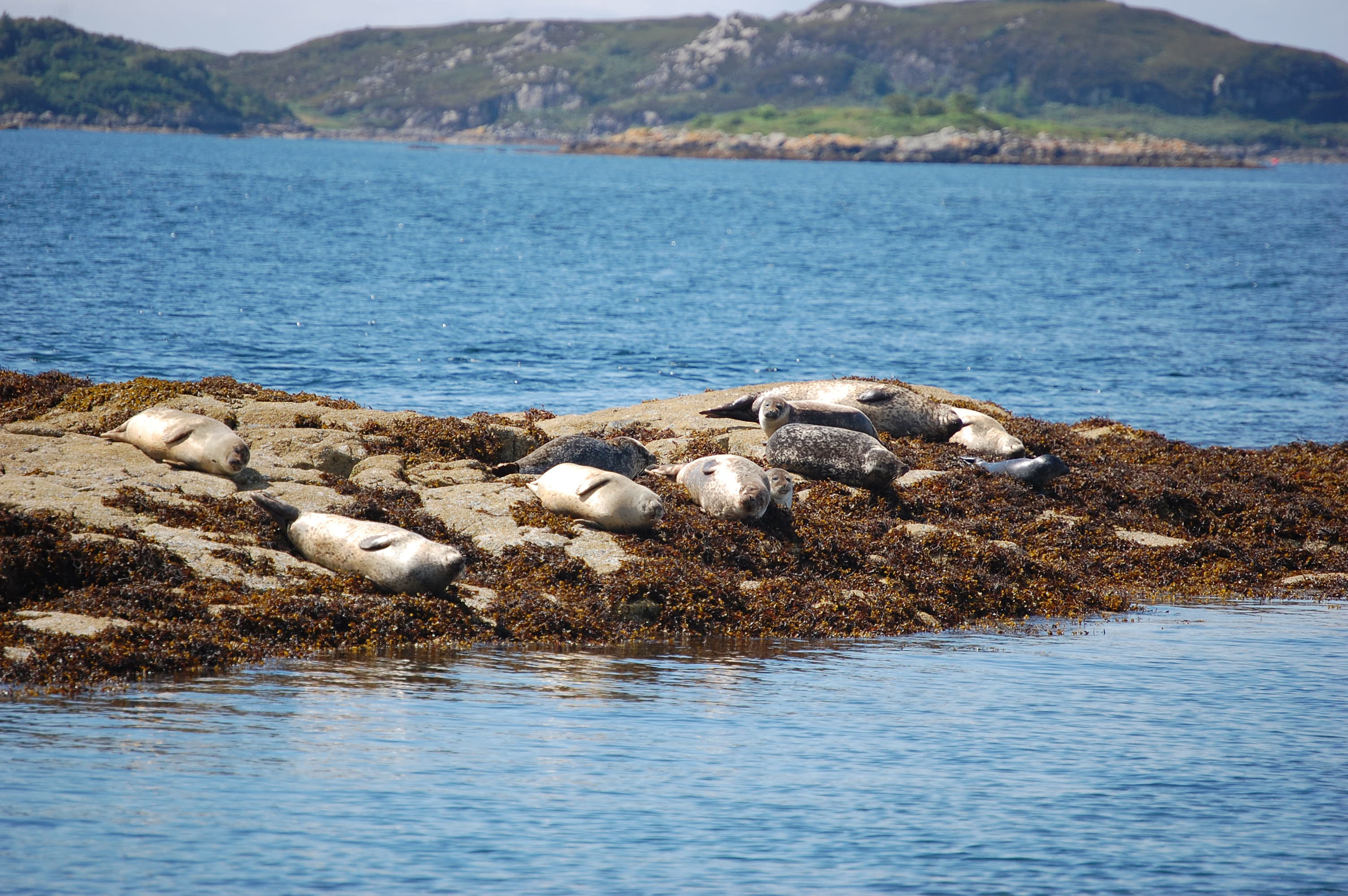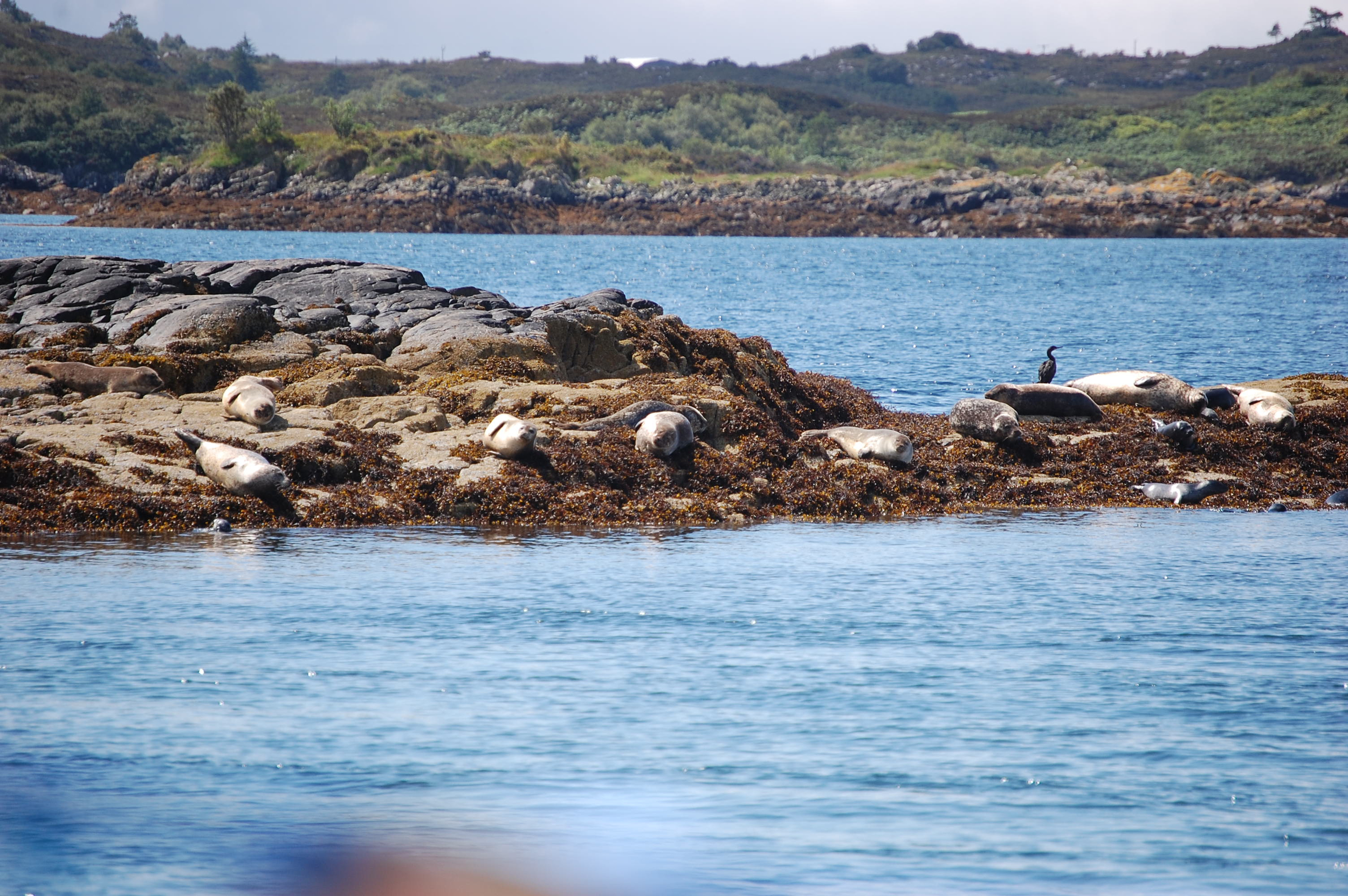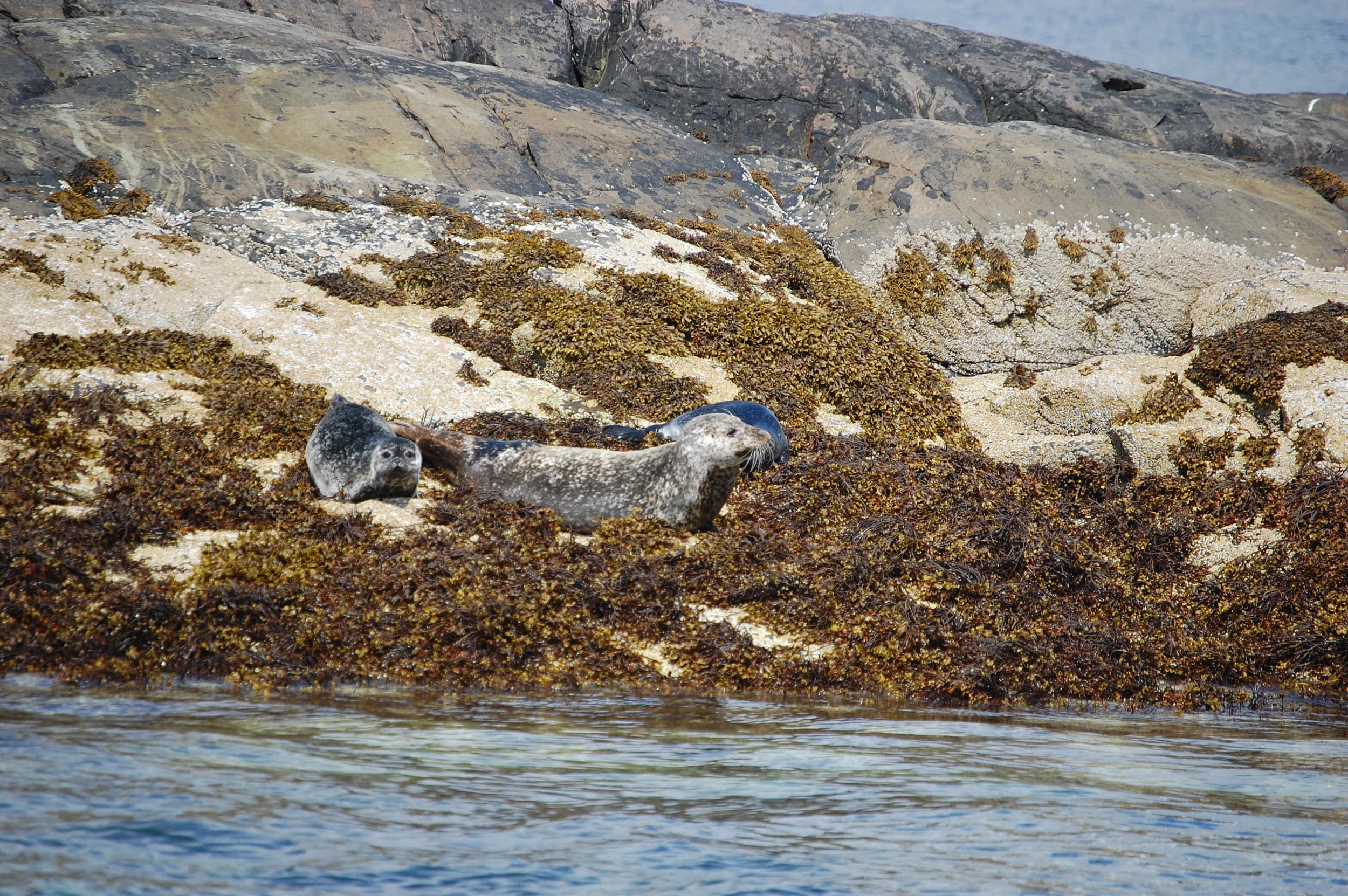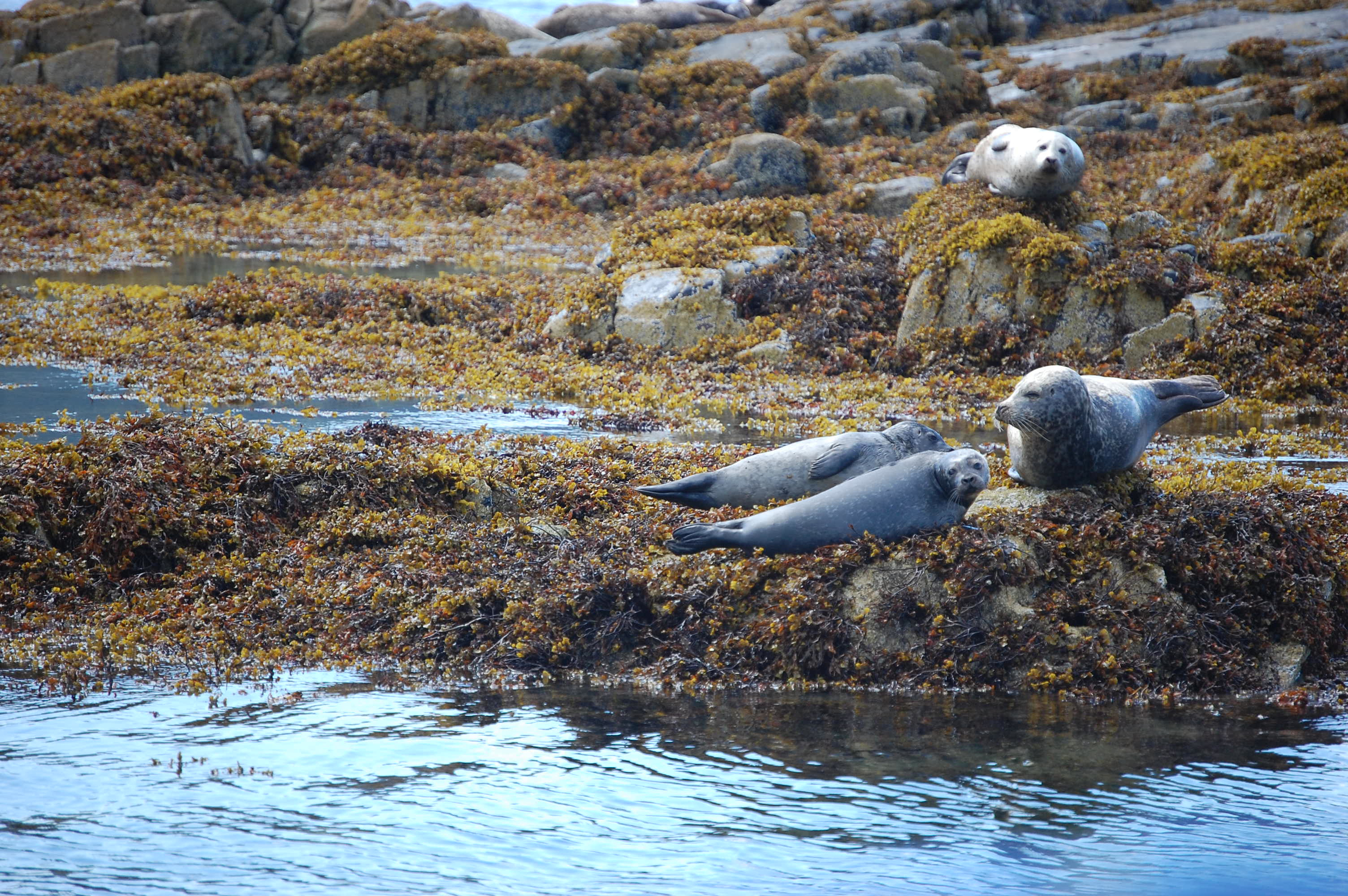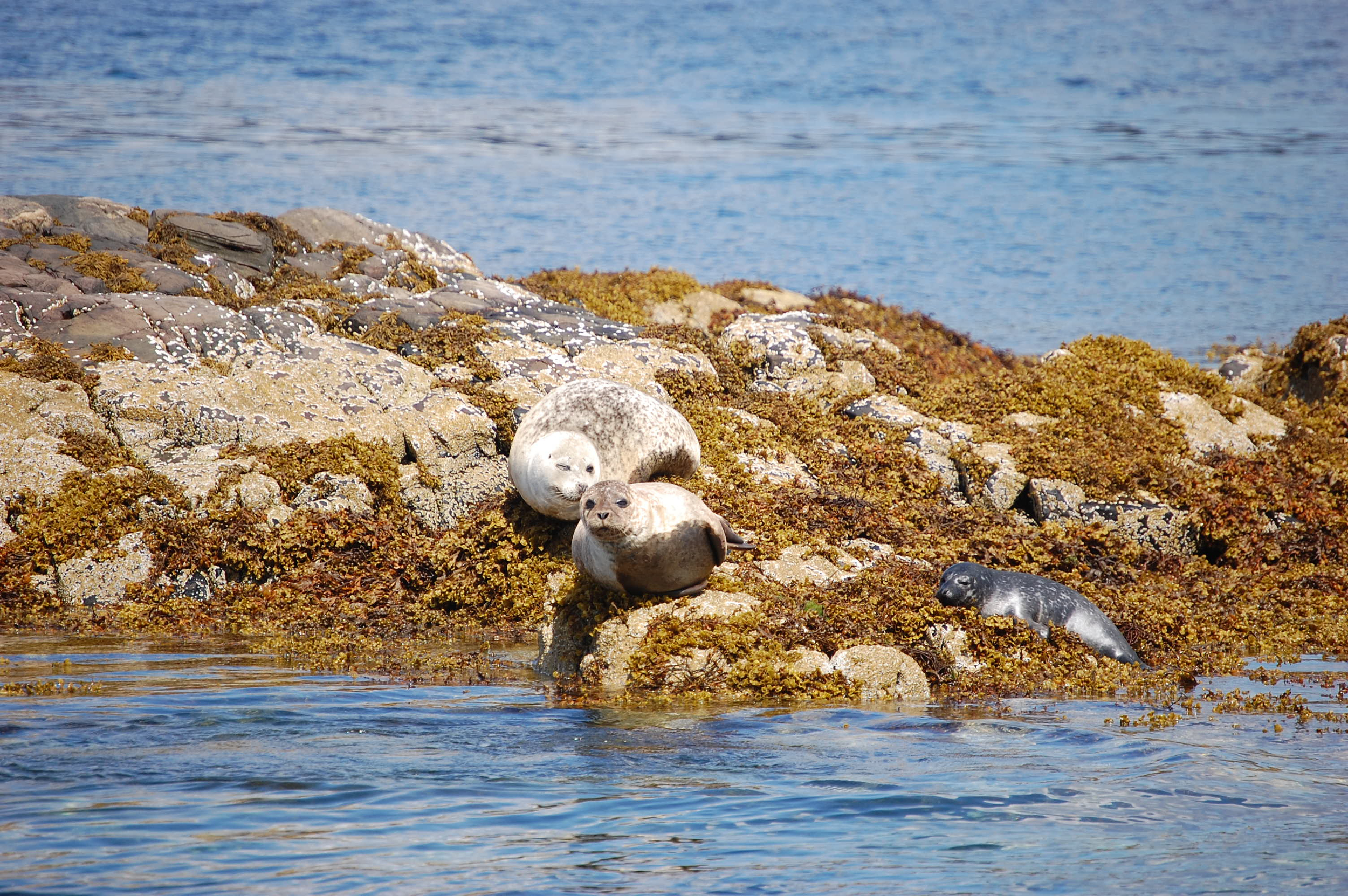The diverse flora and fauna of this region will always provide something to see, watch or listen to whatever the time of year. Written by Hatty Arthur.
In spring and summer Silver Birches bring delight to the eye when in full, green leaf, contrasting beautifully with the majestic evergreen Scots Pine. Rowan, Broom and Hawthorn are much in evidence as well. Up in the hills you will see glossy yellow-green map lichen on rocks and the growing season also brings the treat of wild flowers such as Bluebells, Yellow Flag, Bog Asphodel, Cotton Grass, Common Butterwort, Common Spotted Orchid, Spear Thistle and Harebell to name but a few.
Late summer sees Heather creating great sweeps of colour on the mountain slopes. At sea level, bright and sunny summer days will bring the sight of wonderful colours on the rocks. The yellow-orange Sunburst Lichen is beautifully contrasted against clumps of pink Thrift and delicate purple Sea Asters. Also, look out for Red Campion, Ragged Robin, Meadowsweet and Foxgloves on some of the coastal pathways.
When walking in the hills, look out for Stonechats, Ptarmigan, Red Grouse, Meadow Pippits and Skylarks and there may be Dippers in some of the burns. Listen out for the clear, mournful whistle of a Golden Plover and occasionally look to the sky - you may see Buzzards or Ravens engaging in their energetic aerobatics. You might even be treated to the sight of a Golden Eagle soaring above.
At ground level, there may be an Adder basking in the sun. Its grey body, sometimes with yellow or reddish tones, is strongly marked with a dark stripe down the back, black in males and brown in females and there is a dark V-mark on the back of its head. If you come across one do not try to touch it as they are venomous and its bite requires medical attention. It is most likely that a disturbed Adder will move away quickly into the undergrowth. You might also see Common Lizards, the colour of which varies from grey brown to a wonderfully bright, olive green.
Spring and summer brings insects into the air. Emperor Dragonflies are a beautiful sight to see as they dart about and expect to catch sight of Peacock, Red Admiral, Tortoiseshell, Painted Lady, Orange Tip and Fritillary butterflies, to name a few. Moths are many and varied and you may see a Brimstone Moth. This bright yellow moth sometimes flies by day, when it may be mistaken for a butterfly.
Some insects are not such a welcome sight though. Be on the look out for Horse Flies (or Clegs) and the Scottish Midges!
On the shoreline you will find Oystercatchers, Ringed Plovers, Redshank, Turnstones and Herons and look out for Common Sandpipers. These are small, slim, long-tailed waders and are easily recognised by the way they bob their heads and swing their tail end up and down. When they are disturbed, they fly off at low level with rapid, flickering wing beats and stiff-winged glides, piping noisily.
Autumn sees the leaves on Silver Birches turn yellow, bringing a glorious golden colour to the hillsides, offset by the bright red berries of the Rowans. Many trees take on a new character as, without their leaves, they reveal an adornment of lichen. Beard Lichen (Usnea) and Oak Moss (Evernia) hanging in great quantities from branches give an almost unearthly look to some trees.
Curlews arrive back on the shore from their breeding grounds on the moorland, bringing with them the haunting sound of their bubbling call. Wigeon, Red Throated Divers, Eider Ducks, Little Grebes and Goldeneye can be seen and heard on the loch. Large flocks of Fieldfares and Redwings arrive for the winter months and competition for the consumption of Rowan Berries increases with the arrival of Waxwings, very occasionally in huge numbers.
Red Deer are a part of the Highland landscape and a mature male with a full set of antlers is a magnificent sight. Cold winter nights bring many of these creatures down to road level. As well as catching a deer in your headlights, you may also be lucky enough to see a Pine Marten. This creature’s sinuous, long legs and long, bushy tail are useful features for it's partly arboreal lifestyle. They are largely nocturnal but just occasionally turn up in the daytime.
When at sea level, keep a watchful eye on the water. Common Seals are regularly seen in the loch and they haul out onto the little islands in Loch Carron. They are clearly visible through binoculars.
Otters, though mainly active at night, can be seen during daylight hours. If you are lucky enough to be in the right place at the right time, you will not forget the thrill of watching one of these beautiful creatures.
The diverse flora and fauna of this region will always provide something to see, watch or listen to whatever the time of year.





